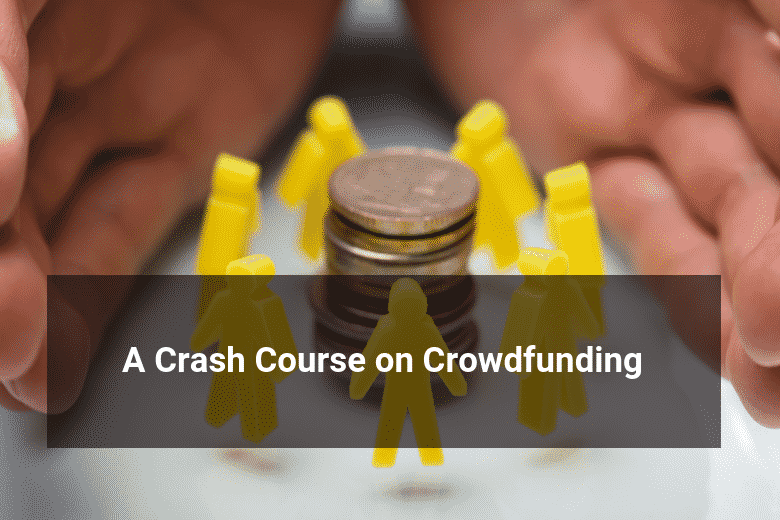Entrepreneurs have generally heard the term “crowdfunding” before, but may not have a full understanding of what it means or whether it is the right choice for them. Put simply, crowdfunding is the act of raising funds by collecting small contributions from many sources instead of one large lump sum from a single source. A crowdfunding campaign needs exposure to succeed, so they are generally held on popular internet platforms such as Kickstarter and Indiegogo.
This article is intended as a basic primer on all things crowdfunding. It begins with a discussion of what is involved before moving into some of the advantages and disadvantages of crowdfunding relative to a more traditional loan. Finally, it takes a look at two case studies: one successful crowdfunding campaign, and one that didn’t turn out so well.
How Crowdfunding Works
There are many variations of crowdfunding, but the most popular uses a “rewards model.” Backers pledge money and receive some perk associated with that dollar amount. Pre-purchasing an entrepreneur’s product before it is released is the most common incentive, but many entrepreneurs add a tiered structure that provides better rewards for larger contributions. For example, $150 might pre-purchase a product, while $300 gets you a special limited edition version. If you pledge something like $2,000, you might even get the chance to meet the developers and collaborate with them on the product’s final design.
Launching a crowdfunding campaign is as easy as setting up a profile on your platform of choice, but making it successful requires considerably more work. Platforms generally impose a time limit on campaigns to ensure that there are always fresh ideas for prospective backers to consider, so you’re up against the clock. Worse, many platforms bill backers only after you have reached your stated goal. If you fail to raise what you need, you’ve wasted a ton of time and energy with nothing to show for it.
Therefore, you need a clear business plan to show potential investors what you plan to use their money for. You also need to pick an attainable target amount and invest in some form of marketing to ensure that the right people see your campaign. You can also expect to live on social media during your campaign so that you can answer any questions asked about your idea.
The Advantages of Crowdfunding
The most important advantage of crowdfunding is that it allows entrepreneurs to raise the capital they need without giving up any of their equity. This ensures that you remain in charge of your company’s day-to-day operations.
A successful crowdfunding campaign also leaves a substantial digital footprint that increases your company’s visibility. If you managed your campaign well, you may also find that some of your earliest backers become consistent, long-term customers. These individuals supported you because they thought your idea was cool, so they may share their enthusiasm with their friends and family as well. Working with a bank is unlikely to provide the same level of consumer enthusiasm for your product.
The Disadvantages of Crowdfunding
The most pronounced disadvantage of crowdfunding is the “All or Nothing” model associated with it. Crowdfunding is a lot of work, and ending up with nothing in exchange can be a real downer. However, it can be even worse to reach your stated goal and have it prove insufficient for your needs. Once you take those contributions, you are legally obligated to provide whatever product or service you promised in exchange. Should you fail to fulfill this obligation, you are facing a protracted legal battle likely to end your company before it really launches.
Some entrepreneurs see crowdfunding as the lazy way to raise money, but you still need a professional business plan if you want investors to open their wallets for you. Participating in social media conversations 24/7 to promote your campaign can be draining, and you can expect to spend a significant amount of time figuring out your incentive structure and target fundraising amount. You can pay marketing firms to handle these tasks for you, but doing so will increase your marketing costs substantially.
Case Study: Oculus Rift
Oculus founder Palmer Luckey had been fascinated by Virtual Reality (VR) technology for years before launching Oculus. He started collecting unsuccessful products in the space as a teenager, and started designing his own headsets at the tender age of 16. Despite a full-time job as an engineer at USC’s Mixed Reality Lab, Luckey made a Kickstarter account in August of 2012 to raise $250,000 to develop and manufacture VR headsets.
His initial goals were modest, but everything changed when Luckey found himself talking to John Carmack on the computer. As co-founder of id Software and lead programmer for successful video game titles such as Doom and Wolfenstein 3D, Carmack is a big name in the video game industry. When he demonstrated an early Luckey prototype at E3 (Electronic Entertainment Expo), Oculus generated more buzz than anyone could have anticipated.
Luckey’s Kickstarter campaign exploded, raising a total of $2.4 million. Luckey used that money to hire additional employees (including Carmack) and develop the Oculus Rift DK1, a $350 VR headset that looked clunky, offered low resolution screens, and had no way to sensing if a user moved their body in order to accomplish something in the virtual world. Nevertheless, it was already better than anything previously on the market, and rated as relatively affordable as well. The product earned Luckey a lot of attention.
Some of that attention came from Facebook, which purchased Oculus for $2 billion in 2014 just as they were accepting pre-orders for their second VR headset, the Oculus Rift DK2. The DK2 fixes a lot of its predecessor’s problems, including higher resolution screens and an external camera to capture a user’s movements. Luckey is the stereotypical whiz-kid who turned his smarts into a multi-million dollar company, thanks in large part to a crowdfunding campaign that generated capital and enthusiasm for his idea.
Case Study: Mighty No. 9
When the “father” of the popular Megaman video game franchise, Keiji Inafune, announced that he was launching a crowdfunding campaign in September of 2013 for a spiritual successor to the series, backers thought that it would be great. The project, titled Mighty No. 9, wouldn’t have Capcom’s trademarked characters but would otherwise have the retro feel that gamers were looking for. Inafune’s ex-employer Capcom had seemingly forgotten about the “blue bomber,” and nobody appeared to be in a better position to continue the series’s legacy than Inafune.
Initially, the campaign was a huge success. Inafune’s company, Comcept, raised $900,000 in just two days. Stretch goals raised the money raised to a total of $4 million during the original campaign, giving Inafune and his team plenty of budget to create the game that backers envisioned.
Unfortunately, it all went downhill from there. Inafune announced plans to turn Mighty No. 9 into a massive media franchise in February of 2014, inspiring whispers as to whether he had his priorities straight. Comcept launched a crowdfunding campaign for a different game called Red Ash: The Indelible Legend in July 2014, all while Mighty No. 9 alternated between unexplained delays and new crowdfunding campaigns for trivial features such as English and Japanese voice acting. Considering the success of the first campaign, how on Earth could Mighty No. 9 need more money?
The relationship between Inafune and his supporters soured, especially when Mighty No. 9 finally released to mediocre reviews on June 21, 2016. Worse, the Xbox 360 version was delayed a day due to technical bugs, the Linus/Mac version didn’t release until August 25, and promised portable versions on Nintendo’s 3DS and Sony’s Playstation Vita were never released at all.
Between the volume of funds raised, communication breakdown, and mediocre final product, Inafune had a ton of egg on his face. Comcept was ultimately acquired by rival company Level 5 in 2017, and Inafune’s reputation has declined to the point that companies are hesitant to work with him in fear of the potential PR backlash. What should have been an easy win turned into a debacle illustrating how not to approach a crowdfunding campaign.
Shipping Crowdfunding Backer Rewards
Launching a campaign, marketing it and raising funds can all prove challenging, however, it is the step that comes after that that is often overlooked: Shipping backer rewards globally. People give you their money for you to realize your dreams, develop your products and build your brand. Your backers do expect something in return for their hard-earned cash, but how will you get the rewards to them?
Shipping can be expensive. Many companies fail to factor these expenses in their budget prior to launching their campaign, resulting in losses. Needless to say, it is crucial that you plan shipping well ahead. Floship can help you with that, as Asia’s #1 Crowdfunding backer rewards fulfillment provider. We fulfilled more crowdfunding campaigns than any other competitor. Crowdfunding campaigns such as Remarkable, Tropicfeel and KAISR, for instance, were successfully fulfilled by us.
Fulfillment costs highly depend on the type and number of products you want to ship, their weight and dimensions, whether or not they include batteries or liquids and what countries they are supposed to be shipped to. There are many different shipping methods by many different 3PLs, all with their own pros and cons, and of course, fees. Feel free to contact us for a free, no-strings-attached consultation. We would love to understand your business needs and provide you with a custom-made solution.
Conclusion
Crowdfunding can get very technical, but the information above should suffice to help you determine if it’s something you wish to explore further. The ability to raise capital without compromising your stake in an idea is fantastic, but going about it the wrong way can destroy not only your current venture but also your professional reputation.
Here are some other recommended posts about Crowdfunding:
5 Secrets to Success from Crowdfunding Campaign Leaders
Kickstarter vs Indiegogo: Which One Works Best for Your Startup

Ready To Upgrade Your Logistic Solution?
Speak to Floship ecommerce logistic consultant about improving your global support chain today





